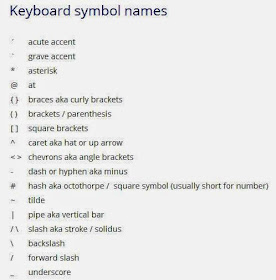

On Trenitalia tickets, the travel class is often written as 1^ or 2^, meaning first class or second class respectively. In Italian, the caret is sometimes used in a similar manner to the ordinal indicator, most noticeably on tickets from Trenitalia, the primary operator of trains within Italy, and Rome's ATAC public transit system.
#CARET SYMBOL KEYBOARD UPDATE#
Please help update this article to reflect recent events or newly available information. For instance to pass a less-than sign as an argument to a program you type ^<.
#CARET SYMBOL KEYBOARD WINDOWS#
The command-line interpreter, cmd.exe, of Windows uses the caret to escape reserved characters (most other shells use the backslash). Often seen as caret notation to show control characters, for instance ^A means the control character with value 1. The upward-pointing arrow is now used to signify hyperoperations in Knuth's up-arrow notation. As Isaac Asimov described it in his 1974 " Skewered!" essay (on Skewes' number), "I make the exponent a figure of normal size and it is as though it is being held up by a lever, and its added weight when its size grows bends the lever down." The use of the caret for exponentiation can be traced back to ALGOL 60, which expressed the exponentiation operator as an upward-pointing arrow, intended to evoke the superscript notation common in mathematics. It is also used to indicate a superscript in TeX typesetting. In mathematics, the caret can signify exponentiation ( 3^5 for 3 5), where the usual superscript is not readily usable (as on some graphing calculators). Surrogate symbol for superscript and exponentiation In the case of Node.js, a caret allows any kind of update, unless it is seen as a "major" update as defined by semver.

Node.js uses the caret in package.json files to signify dependency resolution behavior being used for each particular dependency.
#CARET SYMBOL KEYBOARD FOR MAC OS X#
In Apple's C extensions for Mac OS X and iOS, carets are used to create blocks and to denote block types. NET reference types are accessed through a handle using the ClassName^ syntax. In Smalltalk, the caret is the method return statement. Pascal uses the caret for declaring and dereferencing pointers.

RFC 1345 recommends to transcribe the character as digraph '> when required. In regular expressions, the caret is used to match the beginning of a string or line if it begins a character class, then the inverse of the class is to be matched.ĪNSI C can transcribe the caret in the form of the trigraph ?', as the character was originally not available in all character sets and keyboards.Ĭ++ additionally supports tokens like xor (for ^) and xor_eq (for ^=) to avoid the character altogether. It can signify exponentiation, the bitwise XOR operator, string concatenation, and control characters in caret notation, among other uses. The caret ^ has many uses in programming languages, where it is typically called a caret. This caret is not to be confused with other chevron-shaped characters, such as the turned v or the logical AND, which may occasionally be called carets. In Unicode it is encoded as U+005E ^ CIRCUMFLEX ACCENT and in HTML may be inserted with &hat. Later, the character became reused in computer languages for many other purposes, and over time its appearance was enlarged and lowered, making it unusable as an accent mark. Initially, the symbol was included in typewriters and computer printers so that circumflex accents could be overprinted on letters (as in ô or ŵ). The original meaning of the word caret is a symbol used to indicate where a punctuation mark, word, or phrase should be inserted into a document. 2.2 Surrogate symbol for superscript and exponentiation.This is because the ASCII character set lacks the ordinal indicator, a superscripted little dash and a circle (-o) or a (-a) depending on whether the number's grammatical gender is masculine or feminine respectively. Incidentally, did you know that in Italian the caret is often used to signify that a number is ordinal, (as the st, nd and rd do in 1st 2nd 3rd in English) thus 1^ is used to signify 1st, and 2^ to signify 2nd, and so on. To get a caret alone, the next character should be a space. Rather than having an extra key for each accented character, non-English keyboards are made with the scheme that miguel7808 has noticed, namely that you signify an accent (acento circunflejo) by typing a "dead key" then type the unaccented character. The symbol that you would call a caret in English that looks like a little roof, when used alone, is a character in its own right the circonflexes or circumflexes that you see over certain characters in non-English alphabets are an integral part of those characters.


 0 kommentar(er)
0 kommentar(er)
